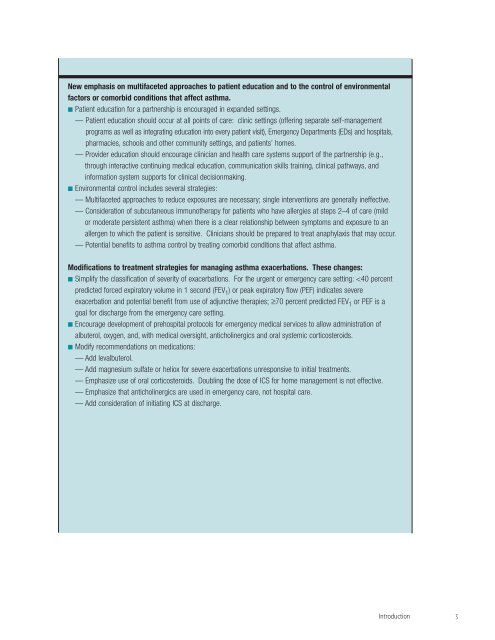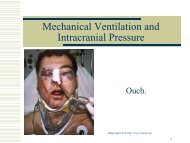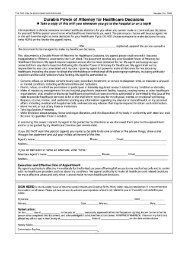Guidelines for the Diagnosis and Management of Asthma
Guidelines for the Diagnosis and Management of Asthma
Guidelines for the Diagnosis and Management of Asthma
You also want an ePaper? Increase the reach of your titles
YUMPU automatically turns print PDFs into web optimized ePapers that Google loves.
New emphasis on multifaceted approaches to patient education <strong>and</strong> to <strong>the</strong> control <strong>of</strong> environmental<br />
factors or comorbid conditions that affect asthma.<br />
■ Patient education <strong>for</strong> a partnership is encouraged in exp<strong>and</strong>ed settings.<br />
— Patient education should occur at all points <strong>of</strong> care: clinic settings (<strong>of</strong>fering separate self-management<br />
programs as well as integrating education into every patient visit), Emergency Departments (EDs) <strong>and</strong> hospitals,<br />
pharmacies, schools <strong>and</strong> o<strong>the</strong>r community settings, <strong>and</strong> patients’ homes.<br />
— Provider education should encourage clinician <strong>and</strong> health care systems support <strong>of</strong> <strong>the</strong> partnership (e.g.,<br />
through interactive continuing medical education, communication skills training, clinical pathways, <strong>and</strong><br />
in<strong>for</strong>mation system supports <strong>for</strong> clinical decisionmaking.<br />
■ Environmental control includes several strategies:<br />
— Multifaceted approaches to reduce exposures are necessary; single interventions are generally ineffective.<br />
— Consideration <strong>of</strong> subcutaneous immuno<strong>the</strong>rapy <strong>for</strong> patients who have allergies at steps 2–4 <strong>of</strong> care (mild<br />
or moderate persistent asthma) when <strong>the</strong>re is a clear relationship between symptoms <strong>and</strong> exposure to an<br />
allergen to which <strong>the</strong> patient is sensitive. Clinicians should be prepared to treat anaphylaxis that may occur.<br />
— Potential benefits to asthma control by treating comorbid conditions that affect asthma.<br />
Modifications to treatment strategies <strong>for</strong> managing asthma exacerbations. These changes:<br />
■ Simplify <strong>the</strong> classification <strong>of</strong> severity <strong>of</strong> exacerbations. For <strong>the</strong> urgent or emergency care setting:





